sTORYTELLINGOne expression of the creative flame is the art of storytelling.
If we imagine the organization as a group of adventurers having survived a recent and harrowing ordeal, the group might next settle into their encampment and position themselves around the fire. They can call on newly-created, shared memories in order to conjure stories, myths, fables, legends and metaphors that are endemic and unique to the tribe. These stories are then passed on from one person to the next, sometimes becoming more incredible. They are even passed onto future generations. (Most of us have heard that “back of the napkin” story of the company's founding – or landing that big investor – that gets more sensational with each telling.) The stories an organization tells are directly informed by the belief system they have about themselves, one another, and the world around them. They are stories about heroes and exemplars, villains and tragedies — mythic portraits of the organizational cosmos. These stories have the power to break or reinforce behavioral patterns that define an organization’s culture. In Building a Story Brand (2017), Donald Miller compares the journey of the end user (or customer) to the protagonist in Joseph Campbell’s famed “hero’s journey.” Most businesses consider themselves to be the hero, flying around and fulfilling everyone’s needs. Miller says, however, that the organization is best viewed as the mentor, guide, or oracle that appears to reveal a secret, share tools or insights, minimize risk, add value, and assist the hero in accomplishing their quest. What happens when one of these organizational stories (or myths) travels outside the castle walls or the confines of the memetic bubble? Life on the inside of an organization sometimes doesn’t make sense to someone with a different cosmology or set of values. So, the stories that organizations tell the outside world are coded transmissions that require translation (through spoken language, marketing messages, or cultural training/onboarding).
0 Comments
cyclesThere are many maps and models of human development that illustrate how individuals function in relation to their community — and how they co-evolve.
Spiral Dynamics, published in 1995 by Don Beck and Chris Cowan, provides a glimpse at how communities and their values unfold in stages — from magic (tribal) to mythic (literal) to mental (modern) to integral (post-modern) and beyond. In 2018, we saw the emergence of memetic tribes — the idea that increased cultural fragmentation has made it impossible to describe people (particularly in America) in categories of left/right or red/blue. Each of these tribes or communities exist in a digital bubble that reinforces their biases and beliefs and goads them into responding to various manufactured crises. In some cases, it’s secularization (and the crisis of meaning) or atomization (and the crisis of belonging). For others, it’s stimulation and the crisis of sobriety. But every tribe has a battle to wage, and they mean to win it. Unfortunately, soon after this phenomena reared its dangerous head, we experienced a worldwide pandemic that saw people hunkered down in their homes and reinforcing these digital bubbles with the unforgiving brick and mortar of cognitive bias and propaganda. Some of them have still not emerged. From 2010-2020, I led an interspiritual community and became involved in the global interfaith movement. I traveled the world speaking about the future of spirituality and the peace-making potential of interfaith dialogue. I saw first hand the plight of people committed to personal and social transformation. I witnessed those doing the sacred work of pulling people out of their filter bubbles and bringing them to the table for actual conversations that would transform hearts, neighborhoods, and communities. The four paths of “Creation Spirituality” were made popular among Progressive/Mystical Christian circles in 1983 when Rev. Dr. Matthew Fox published his book, Original Blessing. The paths are as follows:
Like the four seasons of the calendar, this wheel is one of many religious lenses (Eastern, Western, Native/First Peoples) with which we may view community cycles through time. These wheels, models, and metaphors are how members of the community know it is the right time to plant, harvest, grieve, and celebrate. Whichever maps or models you are using, this shared vision of the world is the cosmology of the organization – how it views the universe. This is where I remind you that all organizations are cults – with their own beliefs and values. I’ve helped countless businesses write their core values, identify the behaviors that support those values, and profess publicly what they believe. And I’ve done it long enough to know that this is what William James meant by the “inclusivity principle” and what Ninian Smart meant by the “Doctrinal Dimension” in his book Dimensions of the Sacred. These beliefs hold groups together. There are many other maps of specific processes that move through time. Some examples include:
In my consulting life, the most well-worn of these has been Ichak Adizes’ Lifecycle of a Business, which we delve into here. And, there are meta-theories (theories of everything) such as Integral Theory (popularized by Ken Wilber in 1995) or the Theory of Process (laid out in Arthur M. Young’s The Reflexive Universe in 1976) that attempt to explain how all of the theories and metaphors throughout time fit together. One thing all of the models share is a holistic kind of symmetry that balances the outer, empirical world with the inner, subjective experience; and draws a straight line between the conditions for change in the individual and the broader evolution of groups or communities. DEI (diversity, equity, and inclusion) initiatives are growing quickly in organizations around the world. Leaders and entire departments dedicated to DEI – or EDIB (equity, diversity, inclusion, and belonging) – are being installed in for-profit and nonprofit organizations. These teams are committed to deeply embedding DEI principles into the values and actions of the business so that it can be more accessible, welcoming, and empowering.
Here we’ll discuss the “E” in DEI. Compared to diversity and inclusion, the words equity and equality (with which equity is sometimes substituted) are ambiguous terms that can be defined very differently from organization to organization. According to Robert Harris, Director of EDIB at National Audubon Society, it's "not advisable to use equity and equality interchangeably." "In general," he says, "equality is when folks receive the same resources in amount and proportion and equity is when differences are recognized. Resource allocation varies based on those differences to achieve equality." How you implement your DEI initiatives will depend on how these terms are defined. Your definition of these terms will also influence your culture deck, hiring process, team charter, operating agreements, mission statement, media/investor relations, etc. Making sure that they are clear and meaningful for everyone on the team is very important. Equity may be defined in the following ways:
To review, diversity means that you have various people in the room, equity means that there is awareness that they are not all on equal footing, and inclusion means that you have a process for engaging them. Equality is the outcome of people being equally resourced. If you’d like to have a conversation about team performance, team design, or team development, please schedule a discovery call today. Change is a book burning.
It stands at the podium in all its righteousness and altruism and asks you to willingly throw your stories on the fire. The well-worn chestnuts you’ve told a hundred times. The stories you’ve clung to and retold for decades. Stories that have garnered you attention, laughter, applause, love, and connection. Change asks that you give all of that up in faith that new stories will arrive. That new stories will magically fall from your lips, pour forth from your soul, or be woven together by a community of people that doesn’t yet exist. I always tell the story of change in personal terms. When I stopped smoking I lost a few friends. You know the ones. The ones that don’t want to see you change. The ones that would rather see you suffer (or die) with them rather than confront change in themselves. I don’t miss those friends so much. But then I got married and I lost a few more friends. The ones that weren’t ready for serious relationships or were struggling to find a part of themselves they could truly give to another. Then, I had children, and I lost most of my friends. Choosing to bring a new life into this crazy world is a bridge too far for some people. And, it added to my responsibilities, making my precious spare time all the more precious. In 2012, I founded the Integral Church – an interfaith group committed to pluralism, religious literacy, and spiritual practice. As you can imagine, my friends thought I had gone off the deep end. And at this point, I could count them on one hand. Even though I had pruned the bushes of my life back to a nub, I didn’t succumb to isolation or depression. I was constantly meeting new people and making new connections. Each decision to step into a new way of being was chosen with intention and I stayed curious about myself and what kind of people I needed to surround myself with. Leaders, visionaries, creatives, those unafraid of change. You can move to a new city; give up your career of 20 years; or come out as gay, bisexual or polyamorous. The effect will be the same. You will slough off some people that you didn’t need in your life anymore, shaking them loose like a winter coat. Living happens on the precipice of change. The most important growth happens while standing at a crossroads. Where I sought a spiritual life, there are also those who seek to leave it behind. For those sitting in the front pew of their church (having spent years working their way forward from the back pew) deconstructing your faith can be scary. Admitting that you’ve outgrown an institution or set of beliefs takes massive courage. These people are melting on the inside (like a caterpillar in a cocoon), dying to be reborn as something else. Republicans and Democrats alike sometimes find themselves in the sanctity and anonymity of the ballot box only to end up voting for someone outside their party. They realize that their values have changed. Their beliefs about the role of government, policy, and responsibility have changed. It could be that they have changed; it could also be that the party has changed (hasn’t moved with the times, or is too progressive). In consulting, we find no shortage of business leaders struggling with change – grappling with a vision in flux. Their strategy is now obsolete and they no longer have the right people in the right seats. For leaders in changing organizations, that means onboarding and aligning your team to the new vision and finding new team members who can help you accomplish your mission in the world. It means rallying the team behind a bright, clear, bold vision even as that vision is dissipating and you are anxiously crafting a new one. You can plant a sapling and wait for it to bloom or you can repot a plant that needs more room to grow. Either way, change happens in an ecosystem – in a forest. If you are the tree, then that tree has a lifecycle – a kind of toroidal function where the acorn and leaves are falling and debris is composting into something else. Turning into food and being reabsorbed through the roots. There is rhythm and motion and life. But this tree is also connected to the mycelium and mycorrhizal network – the fungus and mushrooms and other trees around it. It's literally and invisibly holding its neighbor’s hands underground, forming a living community, a thriving marketplace or a well-regulated nation right underneath your feet. Beyond the forest is what's called the purlieu. The frayed edges of the forest, where it turns into savannah or desert or plain is where mutation (or innovation) happens. It’s where the laws of the forest start to break down. In business, this means we must manage our personal cycle of growth (from levels of listening to unconscious competence), the lifecycle of our business (from start-up to maximization to irrelevance), as well as the innovation portfolio being created on the farthest horizons of the purlieu. In the sci-fi/horror movie, Annihilation, based on the best-selling Southern Reach trilogy by Jeff Vandermeer, the edge of the forest is called “the shimmer.” Inside the forest – beyond the shimmer – things grow at accelerated rates; the DNA of plants, animals, and humans is re-combined before the naked eye; and there seems to be no boundary between physical being and time. The forest in Annihilation is a sandbox of evolutionary emergence. This is exactly the kind of jungle we find ourselves in as we navigate the 21st century. With our political post-modernism seeking to include, our decentralized media marketplace seeking to give access, and our remix culture seeking the novel and the new, change is a constant. Our quest is to get off the well-worn highways and tromp new trails and pathways through the forest. Our challenge is to be two people at once: the Wise Planner who thinks big thoughts and manages complex processes by optimizing or creating new routines and the Impulsive Toddler who will narrowly focus on the process at hand by executing existing habits. Our task is to push our chests into the fog of uncertainty with the courage and contentment of a master. To love the tightrope strung between the known and the unknown. To compost and be composted. Our aim is to live in a state of anticipation and curiosity, not expectation or entitlement. There is a Greek proverb that states, “a society grows great when old men plant trees in whose shade they shall never sit.” I believe a man grows great when he plants trees that he knows will be chopped down and turned to pulp. Pulp that will be pressed into books and thrown on the future fire. THE 7 TYPES OF INNOVATION
ISO TC 279 defines innovation as "a new or changed entity realizing or redistributing value." At Illustrious, we define innovation as the act of creativity and experimentation that turns your best ideas (and even your best failures) into value. This means that whether we’re talking about corporate innovation or a small business that encourages innovation best practices on small teams, you can’t have innovation without the ability to 1) generate and elevate new ideas, 2) iterate ideas into process maps and prototypes, and 3) validate and scale those idea prototypes into the right audience fit. Innovation strategy falls into numerous categories. These include:
THE 3 HORIZONS OF INNOVATION An organization’s innovation strategy also falls into what McKinsey and Company call horizons. These are the time-bound areas of focus for innovation efforts. The first horizon (H1) is the home for any short-term innovation strategy and includes both “incremental” and “notable” shifts along the value scale. Incremental shifts include improvements or additional unique features to products and services (think a toothbrush with rubber grips or a flipchart with handles). According to Magnus Penker, author of How to Assess and Measure Business Innovation, “notable” shifts include a “distinguishable advance in design, process or business model” (think the RAZR phone or disposable hearing aids). The second horizon (H2) includes mid- to long-term innovation efforts and results in significant or “radical” shifts. This means there is an advance in the product or experience design as well as to the process or business model (think Southwest Airlines or iPod/iTunes). The third horizon (H3) is where we see game-changing transformational shifts. The hallmark of the third horizon is that at least two important advances are made in a combination of design, process or business model. (Think market disruptors like the razor and blades model or the light bulb and electrical grid.) Each of these corporate innovation types requires a different leadership style (entrepreneurial, democratic/participatory, coaching/charismatic, etc.). Each type requires a decision to buy, build, partner or do “open” innovation (collaboration outside the walls of the business). With each leap, what got you there will not get you where you’re going. At each horizon, you will take on new or different team members, mindsets, language, business systems and management methods. When you commit to the practice of innovation, you are not only committing to changing your surroundings, but also to changing yourself. If you’re ready to have a conversation about the inner work required to lead innovation in your business, we’d love to help you shine. by Rachel Blasco
From updating your strategy to scaling your team, growth is change and change is hard. Visual Consultants are hired to “facilitate the organization to perceive, understand, and develop the organization’s business and human processes, in order for the client to improve the situation themselves, as they define it.” Visual Consultants work with clients to (quite literally) paint the picture their teams are trying to describe in vivid details that is clear and easy to understand. In other words, visual consultants are the map makers and cartographers for our ideas in order to define and put plans into actionable stories. Visual consulting is at its essence, storytelling. The practice developed out of the constant need for innovation in businesses that want to remain not only at the top of their game, but to continue to move the ball forward in their field. Visual consultants are at the intersection of three fields that have given rise to a new way of working: Visualization, dialogic practice, and change consulting. The outcome is both rewarding and inspiring to executives and teams alike. Visual storytellers and consultants both design and lead change in organizations and communities that may otherwise feel unmotivated or simply unclear on what the objectives and expected outcomes of the group may be. Ultimately, this is an orientation in process thinking and process leadership. So, clients seeking alignment on new visions, process transformation, innovation, culture change, and sustainable results get the results they are looking for in hiring a visual consultant to bring order to the chaos. Why Seeing is Believing In both high profile corporate coaching and small personal development circles, creating a clear picture around your goals and steps to get there is a central topic. Look at the vocal facilitators and consultants as pros at this. Navigating both verbal story and visual landscape, these experts bring design thinking and creativity to the gray landscapes of corporate agendas and enhance team enthusiasm and commitment. An article in Forbes, Neuroscience Explains Why You Need To Write Down Your Goals If You Actually Want To Achieve Them, discusses the research behind describing or picturing goals and the strong association with goal success; and, people who very vividly describe or picture their goals are anywhere from 1.2 to 1.4 times more likely to successfully accomplish what they set out to do. Think about visual facilitation and storytelling as the map to your destination. It’s much easier to get to where you are going if you have a better picture of what to expect or look for. It helps our monkey brains process more efficiently, and focus on what matters. If you are experiencing the following, you may need someone to consult with on your vision, culture, story or strategy. Some of the main complaints among brands and businesses that would benefit greatly from visual consultants are:
With all of this in mind, and especially if you are experiencing any of these issues, it makes sense to hire visual consultants to facilitate innovation workshops and improve overall team output and performance while defining what the next chapter of your business will look like. If you still don’t know where to start or what this might look like for your organization, we’d be happy to schedule a quick 30-minute call. In a post-pandemic world, we are starting to see the effects of disruptive change take hold in organizations. We are starting to hear things like the following:
All of these (and more) are signs you are entering into the season of renewal. Getting past the roadblocks, obstacles or disasters is only the beginning of the challenge. According to the Drexler/Sibbet Team Performance model, the renewal stage brings closure to the cycle of work done by teams and usually includes things like adding new members, harvesting what you’ve learned, and celebrating endings. Individuals and organizations need to pause and create time to assess, adjust, process, and recalibrate, before moving forward to the next stage. Looking at the Investment Portfolio canvas designed by The Grove, we see that in the bottom left quadrant (labeled “Plow”) the focus turns to things that are in decline, being displaced, underutilized or need to be repurposed. As David Sibbet explains in his book, Visual Consulting, these elements of the business don’t need to go away completely, though some might. When we think about the process organically or agriculturally, these are the parts of the business that can be composted or tilled into something new. They are stretches of field that need to be replanted, possibly with new seeds. They are crops that may need to be scaled down or moved to a different plot. This requires strategy and your best thinkers using the data that’s been harvested throughout the other seasons.
You should use your season of renewal to reconnect with your vision, mission, and purpose. Reflect on what kind of leader you’ve been and whether that style of leadership is still required or whether there needs to be some adjustment (or inner work) on your part. RENEWAL OPPORTUNITIES Here are some things you can do as a team to invest in (and celebrate) the season of renewal.
If you need help leading a renewal session, re-casting your vision, or facilitating or capturing a town hall or retrospective, reach out to us to schedule a 30-minute discovery call. Great leaders hire great coaches.
Over the last 7 years, I have had the honor and privilege to coach some of the most gifted, passionate and powerful business leaders — from other coaches to small business owners to Chief Innovation Officers. Coaches don’t need to understand their clients or the business, they need to believe in them. They need to see the utmost potential in their client and identify the growth and development opportunities for that executive to leverage. People hire coaches for a reason. Some of my clients were at a crossroads, overwhelmed by uncertainty while trying to navigate their business at the length of a flashlight beam in the darkness. Some of them were stuck — immobilized with fear and overwhelm because of financial pressure or because they were comparing themselves to others. Some were growing so fast that they were sickened by their own velocity. Some were bobbing in uncharted waters, depressed, isolated, and needing physical contact or someone to talk to. Some had found success and simply wanted to find ways to give back to their community or show up as a better leader. In every case, we talked about it. I asked questions. I noticed where topics were avoided, or where their body language shifted, or where they simply lacked the belief in their own power and agency. And then, I asked a different question. Each time, they came away with some kind of insight and commitment to change -- one massive action (or small, next, best step) that they could take toward growing their business or becoming the visionary leader that they were meant to be. Here are the top 8 areas in which I’ve seen clients move the needle, with sometimes game-changing breakthroughs. 1. SELF CARE An insight into self-care may be as simple as “I need to have more fun!” Other times, the client has realized “I need to take care of myself otherwise I can't help anyone else.” I’ve also heard clients say, “I’m the one creating all of this pressure on myself.” This is important because they have realized it is their own hand on the levers and gauges creating the tension and conflict within not only themselves but their relationships. One client, who had been quarantined during the pandemic, was so affected by the isolation that she couldn’t focus on her business at all. I could see in her downcast eyes and her buckled shoulders that she was sad. I could hear in her voice (esophageal constriction and vocal fry) that she was weak. By the end of the call we had identified a new, very specific, goal: “I am starved for touch so this week I will schedule a coffee with my friend and hug them for at least 20 seconds.” *Coaches are not therapists. We don’t look back at wounding, we look forward and focus on goals. If a client displays symptoms of depression it is our responsibility to refer them to (or encourage them to seek out) a clinical approach. 2. MINDSET Sometimes clients forget how amazing they are. They forget everything they’ve accomplished or only remember the last thing they did (the play before the timer ran out, the last speech of the campaign). Imposter syndrome can creep in and their mindset may move from a dynamic, growth state to rigid and fixed. By reminding clients how amazing they are, and inspiring them to affirm their attributes or accomplishments aloud (sometimes very loud), they can turn that mindset around. I’ve heard things like, “Wow! I’ve done some amazing things in my life and I need to remind myself what a badass I am.” One client, who doubted their worthiness, pushed back on her own negative self-talk saying, “No. I deserve to make good money. I want to share my business and my mission with the world. In order to make that happen, I need a bigger platform. So I need to keep suiting up and showing up.” 3. PERFECTIONISM / FEAR Resistance feeds on fear. Recovering perfectionists will tell you they deal with a chronic and crippling fear of failure and disappointing others -- that they simply cannot launch version 1.0 because it won’t be good enough. They may say they have “high standards” and that their superpowers lie in “planning” and “thinking things through.” The coaching goal is not to make the client smarter, but more effective. And that requires thinking and action. I like using the analogy of the sea and the stars. The sky represents perfection. We can gaze upon it from afar, appreciating the beauty of our sunsets or the splendor of the Milky Way. We can use the North Star to guide us and chart a clear course. The waters we’re on, however, are choppy -- tossing us back and forth, threatening to swallow us whole. The boat we’re sailing is constantly being rebuilt and repaired. Life (and your experience or interpretation of it) is imperfect. Don’t confuse the water with the stars. The best you can hear from a client is that “expecting perfection is unrealistic and unfair to myself and others.” 4. TIME MANAGEMENT / STRATEGY The brain is not designed to hold all of your appointments and deadlines. It is not intended to retain your annual strategic plan or your team’s objectives and key results. That's what mark-making and visual tools are for. Write that shit down. The most surprising and staggering observation from my years of coaching is the amount of business owners and executives who don’t have a handle on their schedule or their plan. Some are wasting time where they shouldn’t. (“If you’re saying yes to this, what are you saying no to?”) Some don’t use a calendar or they use too many. Some use a calendar for their business, but not for their family, leaving their spouse and children feeling stranded, angry, and confused. When we break the big thing into smaller things, I’ve heard clients say, “That doesn’t feel intimidating. My brain can handle it when it’s broken down into smaller chunks.” For small business owners, this is vitally important. I’ve heard them say things like “I need to create a visual sales pipeline to track my leads so that opportunities stop falling through the cracks.” When it comes to time management, I do a happy dance every time I hear a client say, “I will buy a planner and start writing down my commitments” or “I will look at my Google Calendar every morning so that I feel like I am more in control of my day.” 5. STORY It’s important that my clients know what story they’re telling. I do a lot of StoryBrand workshops, helping organizations put their client in the center of the story, elevating their customer as the hero, and showing up as their guide. We talk about the work of mythologist Joseph Campbell and novelist Kurt Vonnegut. We talk about The Hero’s Journey and the shapes of stories. When coaching clients consider the beginning and middle of their story from the outside, it’s sometimes easier to imagine where the ending should logically take them. I’ve heard clients have major insights such as, “Oh. I’m not the Hero at all. I’m the Oracle.” I’ve also heard them say, “I’m further along in my journey than I thought I was” and “All the ingredients of hope and change are in my story. I just need to get better at telling it.” One client decided to tap into her own history as a survivor of abuse in order to help others tell their story and grant them the power of choice. She said, “So many people feel like they don’t have a choice. If I can create choice for others in restricted spaces, there is unlimited potential.” 6. MARKETING / SALES From writing polarizing copy to creating compelling content, marketing is something I love helping my clients think about. I spent over ten years leading a marketing team in the media industry. Inbound marketing, advertising, and event activation/sponsorships are in my blood. One of my clients was struggling to build an annual content calendar and had brainstormed a bunch of ideas she thought were failures. She had been focused on generating one great tagline to describe a year-long program and had what she thought was a list of 10 garbage ideas. I asked her to read them to me. One after another she said the most amazing things that left me wanting to learn more. I didn’t hear a list of slogans or taglines, but a list of succinct, compelling topics. They were all the things she wanted her clients to learn. I told her that she was correct -- she had failed to write a tagline, but she had succeeded in writing 10 of the 12 monthly themes for her content calendar. She only needed two more. Her jaw dropped. “You’re right! These are great! Each one of these could be a monthly theme that includes a live video, a blog post, a newsletter, a guest interview on my podcast, you name it.” Another client admitted to “getting awkward” during the sales process -- usually right after telling her prospect the cost of her services. “I spend all this time building rapport, and then after I say the dollar amount, I get quiet and business-like and something changes,” she said. “I know they can feel it.” “Why on earth would you shift your approach halfway through a sales call,” I asked. “Is it because you switched from words to numbers?” “No,” she laughed. “Is it because you think you’re charging too much?” “No. In fact, I could probably raise my rates.” “Then what changed? What’s different at that moment,” I asked. “I’m scared,” she admitted. “For the first time in the conversation, I’m afraid they’ll say no.” After that, we found various ways for her to release the pressure and expectations she put on herself going into each sales call as well as to keep her energy consistent when talking about money. 7. GROWTH Some of my coaching clients have felt like they are “drowning” in the rising waters of change or queasy from the speed at which the business is scaling. Growth is change and change is hard. There are three types of change -- developmental (when things naturally grow, unfold or evolve), volitional (the boss has updated our sales goal, so we need a new strategy) and circumstantial (we couldn’t have predicted that the volcano would erupt, but it has, so now we run). When navigating growth, it’s important for most of my clients to know who or what is causing the change, and whenever possible, have agency or a sense of control over the direction. I’ve heard clients say “I need to reach outside my comfort zone” when skilling-up or moving from competence to excellence. I’ve heard them say, “I need to look outside my bubble” when hiring new team members. I’ve also heard them say, “I know this change is coming. There’s nothing I can do to stop it. And I can handle the growth!” 8. IDENTITY Mindset is important for confidence and self-image, but the client must also identify who or what they want to be. If you want to be a rockstar, but don’t see a charismatic leader when you look in the mirror, the audience will know you’re bluffing. They’ll smell it a mile away. If you want to be a successful business owner but think of yourself as someone who “isn’t that good with numbers,” your numbers will reflect it. You don’t have to be Mick Jagger or James Brown to be a successful bandleader and front-person. And you don’t have to be a mathematician to be a business owner. You only have to see yourself as who you imagine yourself becoming. This is what facilitates change in an individual, when the smoker commits to the vision of themself as someone who doesn’t smoke. This is what facilitates personal and professional development, when the administrative assistant commits to the vision of themself as the VP of Operations. They do the things and make the decisions that person would. They surround themselves with the kind of people that person would hang out with. This is important when developing vision and purpose in business. Knowing whether you are an accountant or a “fractional CFO to experts in the manufacturing industry” can make all the difference in the way you position yourself, talk about what you do, and connect with prospects. I’ve heard clients say, “I now know what kind of leader I am and it feels good.” One of my clients was a former therapist who had transitioned to a group coaching model. She was excited and intimidated by the Wild West of the unregulated coaching industry. She had spent years following guidelines; encouraging her patients to lick their wounds and talk about their worst times; avoiding giving direct advice, not making recommendations about helpful resources, books or podcasts; and not sharing or disclosing her own story. Now, as a coach, she was expected to do the opposite of all those things. Her inner therapist would raise its fearful voice and tell her it wasn’t right to do those things. It would say she wasn’t qualified and that she might cause harm to someone by giving them the wrong advice or by being too tough on them. She was in a real identity crisis. One day, she had enough. The desire to grow her limitless coaching business far outweighed the desire to battle with insurance companies over copay, and she said, “That’s it! I’ve got to tell my inner therapist to back off when she says I shouldn’t do those things. I’m a coach now.” If you’re interested in hiring an executive or business coach, sign up for the Amplified Executive Coaching program here. See you on our next call! Guest post by Ashley Preston There is a belief in the business world that almost every employee is replaceable. There are numerous CEOs who will shrug when they hear the staff is struggling with the workload. There are plenty of executives who think that demanding schedules and high expectations will help filter out the mediocre workers and leave only the best ones standing. Those same CEOs watch people leave year after year, either through voluntary or involuntary departures. They regularly make rapid changes with each new worker they bring in – hoping to find the formula that keeps profits growing. They look to hire people who will continue to bring 110% to the table every day. They certainly do not mind when these workers put in the extra time and energy to advance company interests. These CEOs will often put more and more on these new workers’ plates until these employees can no longer handle the workload, and then let them go for being unable to perform like they once did. It happens again and again, and while the company continues to adjust to make room for new people who are still eager to right the ship, they continue to waste time and money trying to perfect a system that is deeply flawed at its core. These companies will continue to hit ceilings that without a knowledgeable, passionate, and energized team, they will never break through. Here is the true cost of employee burnout and high turnover – and what you can do to stop the bleeding before your best talent walks out the door. What it Costs to Regularly Replace Workers Employee turnover is expensive, and the entire team feels it when a superstar leaves the company. Researchers report that the cost of losing an employee costs the company thousands of dollars, and the more important the position, the more it will cost to fill. Hourly workers cost on average $1,500 an employee, including the cost of hiring, onboarding, training, ramp time to peak productivity, loss of customer engagement, and general morale impact. Technical positions cost companies about 100-150 percent of their salary. C-suite turnover costs over 200 percent of the salary to replace and get up to speed. They describe employees as appreciating assets that create more value for the organizations over time. It is estimated that about two-thirds of all sunk costs are intangible, including lost productivity and knowledge. One case study argues that retaining a sales person for three years instead of two, along with better onboarding and management practices, yields a difference of $1.3 million in net value to the company over a three-year period. However, the most substantial impact on turnover is not the cost – it is the damage that it does to your remaining employees. A beloved team member’s departure can have a huge impact on company morale. It leaves holes in team dynamics and can leave other employees asking if they should be looking for a different job too. It does not help when those same employees must take up the extra slack. If the team is already taking on a full workload, they might not be happy to spread themselves so thin. Halting those projects could lead to delayed releases and lost revenue but pushing employees to work harder and more risks employee burnout and even more staff turnover. Employees can spot a toxic work culture from a mile away and will not feel the need to stay loyal to a company that does not feel the need to make improvements. 47 percent of active job seekers cite company culture as the primary reason they left. Companies with high turnover might soon find it difficult to attract top-tier talent after a while too. There are so many ways for current and former employees to review the company and its culture. Earning a reputation as a revolving-door employer will not do you any favors in attracting good candidates. Regardless of the industry, some turnover is just part of business, but keeping good employees happy and productive is the best way to ensure company success. How to Reduce Employee Turnover Researchers say that about 75 percent of all turnover cases are preventable. There are proactive steps you can take to ensure your employees feel seen, valued, and empowered to help the company succeed. Say Thank You Failing to recognize employee achievements and celebrating their successes is one of the fastest ways to burn out your staff. It will make them feel undervalued and make them more likely to disengage from the job. Companies that have strong employee recognition programs have a 31 percent lower voluntary turnover rate compared to companies who do not take the time to say thanks. Leverage employee spotlight programs to highlight a job well done. Take advantage of your company's social media platforms to recognize good employees. Be sure to use rewards as you can – while monetary are always welcome, you can get creative with how you say thanks. What matters is just that you take the time to say thanks. Get Feedback Make sure your employees feel like they have a say. Give them an easy way to provide constructive feedback so they can raise concerns and address issues before they become problems. Thanks to technology, you can use tools like employee engagement surveys to let them share their thoughts anonymously. Keep tabs on your rockstar employees and be sure to check in to see what they like about their position and what you can do to help them further succeed. Be Empathetic Offer employees what they want. Benefits like flexible schedules, remote work, and substantial health insurance packages are major draws for new employees. Nearly 40 percent of employees have left their job for one that offers remote work. Make sure your employees understand you see them as people with lives outside of the office. Being an empathetic employer has major benefits too. Not only will the reputation help you attract better employees, but the employees you already have are more likely to work harder. Nearly 80 percent of employees are willing to work longer hours, and 60 percent of them will accept less pay if they feel like their employer cares about them. Taking care of your employees takes care of business. It is the best way to ensure that you and your entire team can perform to the best of your abilities and create the success you are striving for. If you are struggling right now, contact us to see how to regain control of your company culture, realign your mission, and close any communication gaps you have.
From updating your strategy to scaling your team, growth is change and change is hard.
Visual Consulting (sometimes called Process Consulting)* is when a consultant is hired to visually “facilitate the organization to perceive, understand, and develop the organization’s business and human processes, in order for the client to improve the situation themselves, as they define it.” This differs from “Expert Consulting,” where the client has a perceived and predetermined need and a consultant is brought in to share their expertise related to that specific need. It is also different from “Pair-of-Hands Consulting” (or staff augmentation) where the consultant (or consulting team) is brought in to fulfill work that the client lacks the time or resources to deliver. Visual Consulting is about teaching the client to fish, not fishing for them, or selling them fancy fishing equipment. If you are experiencing the following, you may need someone to consult with on your vision, culture, story or strategy.
There are four things to look for when hiring a process consultant. 1. They are Process-Agnostic If a consultant tells you they have an out-of-the-box solution, don’t believe them. There is no one-size-fits-all remedy. There is no killer app in consulting. It is dynamic, empathy-based work that requires deep listening and should include the wisdom (and the elements that work) from different maps, models and methods. A good consultant should have a belief in human potential and a passion for building capacity on your team, regardless of what book they’re reading. 2. They Understand the Process of Change Look for a consultant that understands the positive and negative effects of change, what resistance to change looks like in individuals and groups, how to ease or work through that resistance, and ultimately, how to empower teams to lead themselves through change. If the change work (or creativity, or innovation) ends when the consultant leaves the room, they are not the right consultant for you. A good consultant strives to develop resilient, emotionally intelligent teams that are well-versed in the language of change and fire-tested in the crucible of transformation. 3. How They Do Anything is How They Do Everything Take notes on the sales/discovery call and their approach to setting boundaries and expectations. Notice the way they organize information and their attention to detail. This is exactly how they will engage with you (and possibly your clients). If they are late, rushing, scattered, forgetting things, their tone is too negative (or jarringly upbeat and positive) this is not a good sign. A good consultant matches your energy, makes you feel at ease, asks great questions, and sometimes provides clarity and answers before you can form the questions. 4. The Proof is in the Artifact They are a visual consultant, so look at their visuals. Are the final deliverables something that will be ready to share or distribute with your team/organization? Do they have visual impact? Will they be memorable or just another “dumb” report? The efforts and summary of your work should not only live on and easily shake hands with your implementation lead or strategic plan, but they should inform (or change) the way you tell your story -- internally and externally. If you still have questions, let’s set up a Discovery Call to discuss what’s happening in your business. * Source: Visual Consulting: Designing and Leading Change, David Sibbet and Gisela Wendling, PhD. |
Details
ABOUT THE AuthorJoran Slane Oppelt is an international speaker, author and consultant with certifications in coaching, storytelling, design thinking and virtual facilitation. Archives
March 2024
Categories
All
|

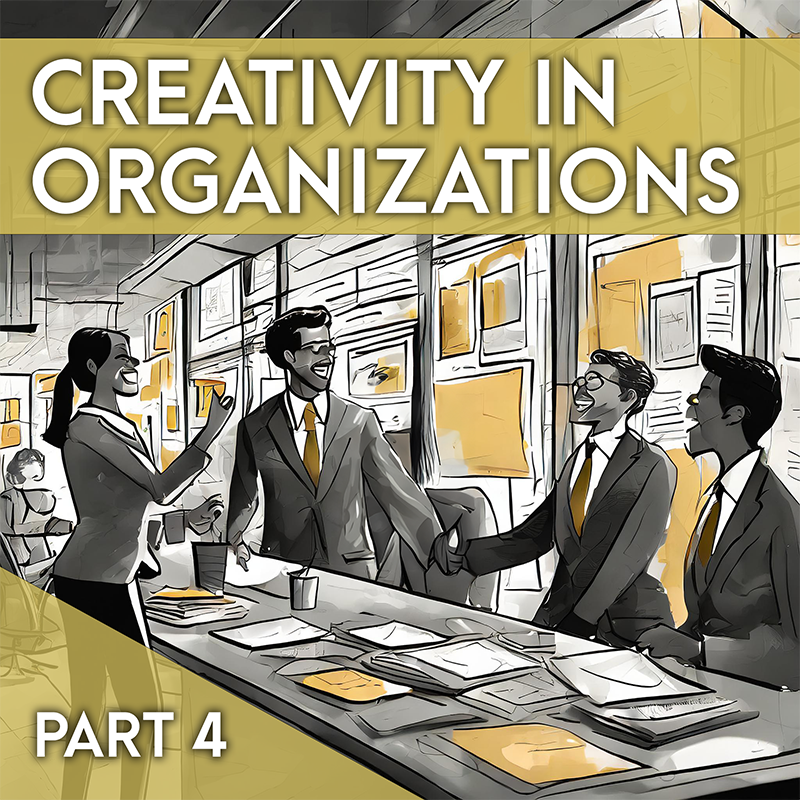
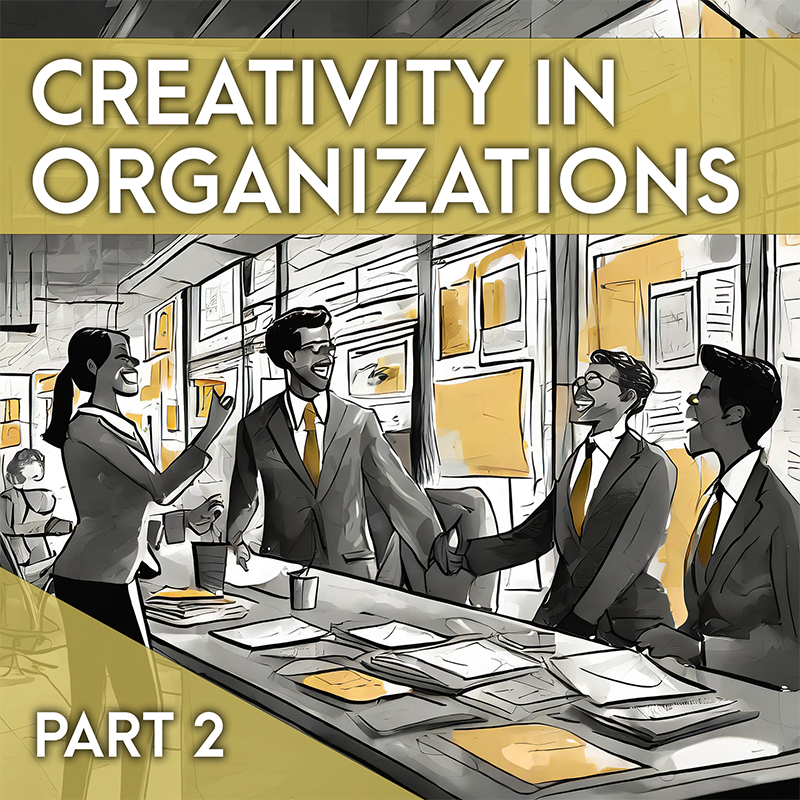


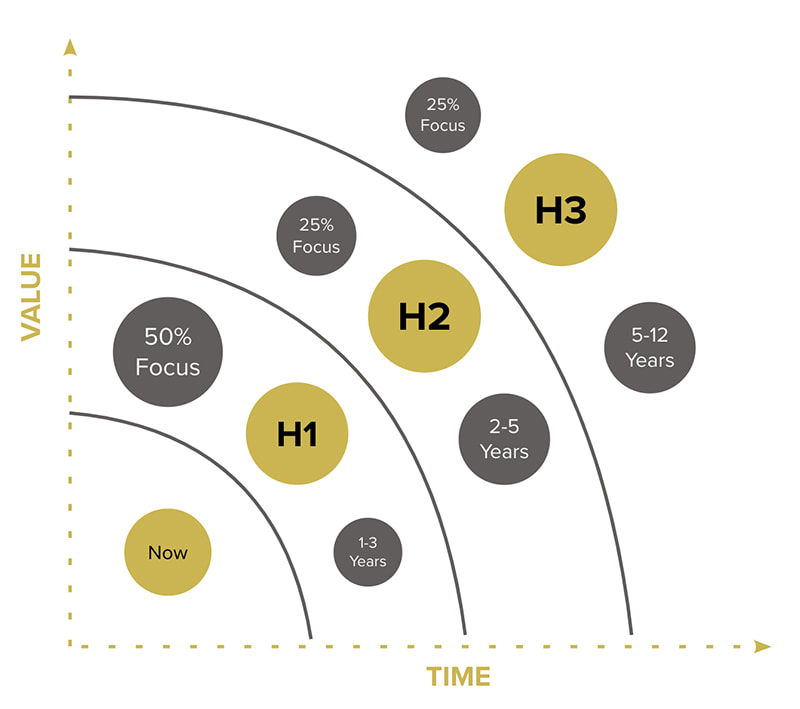
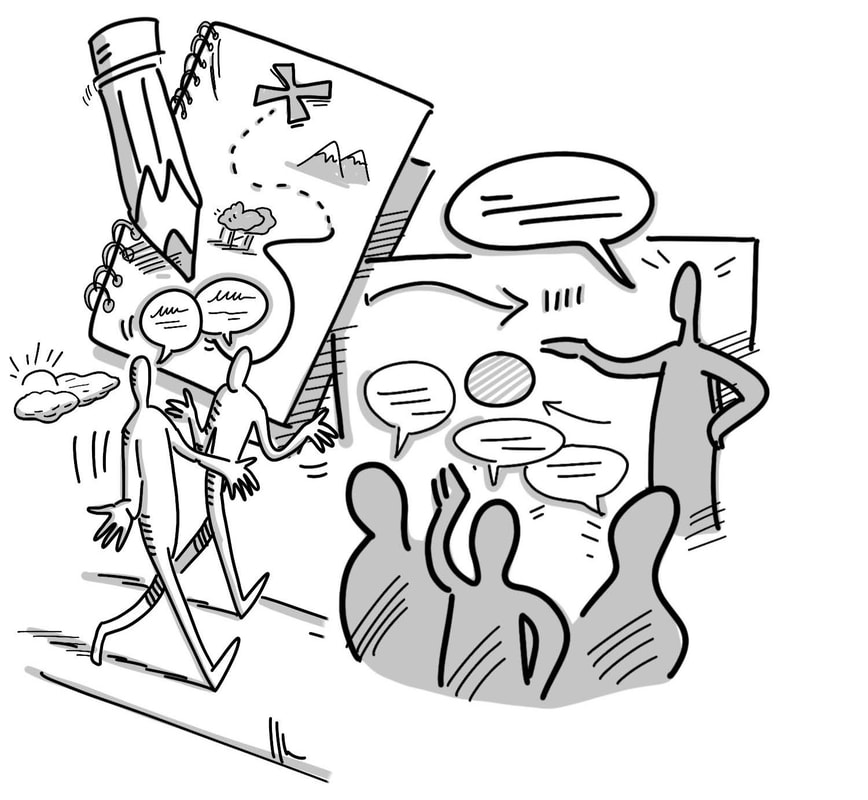
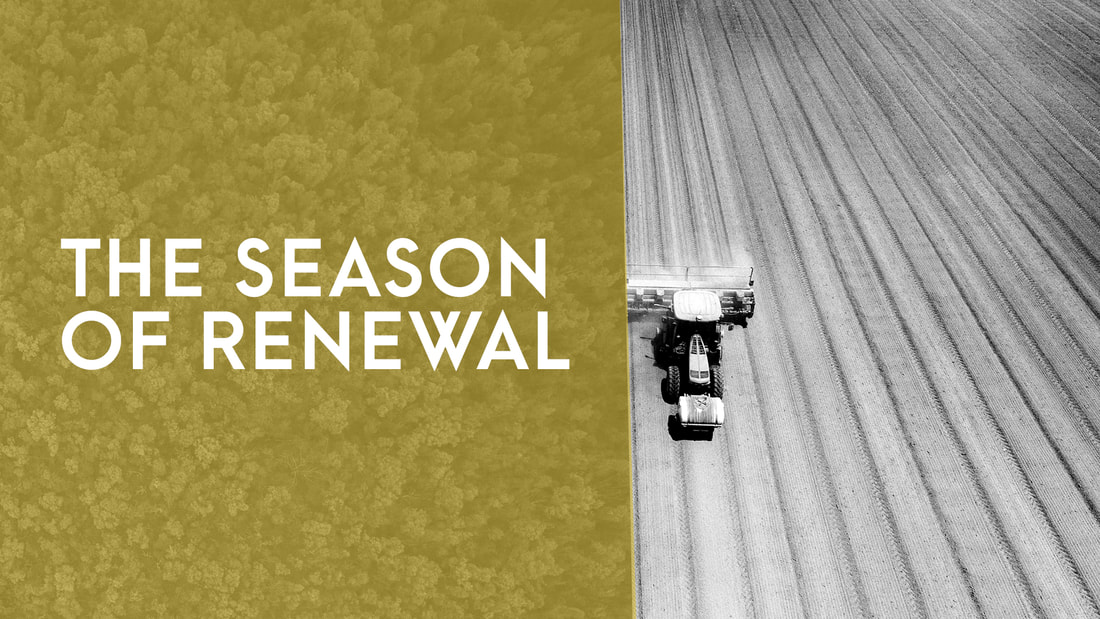
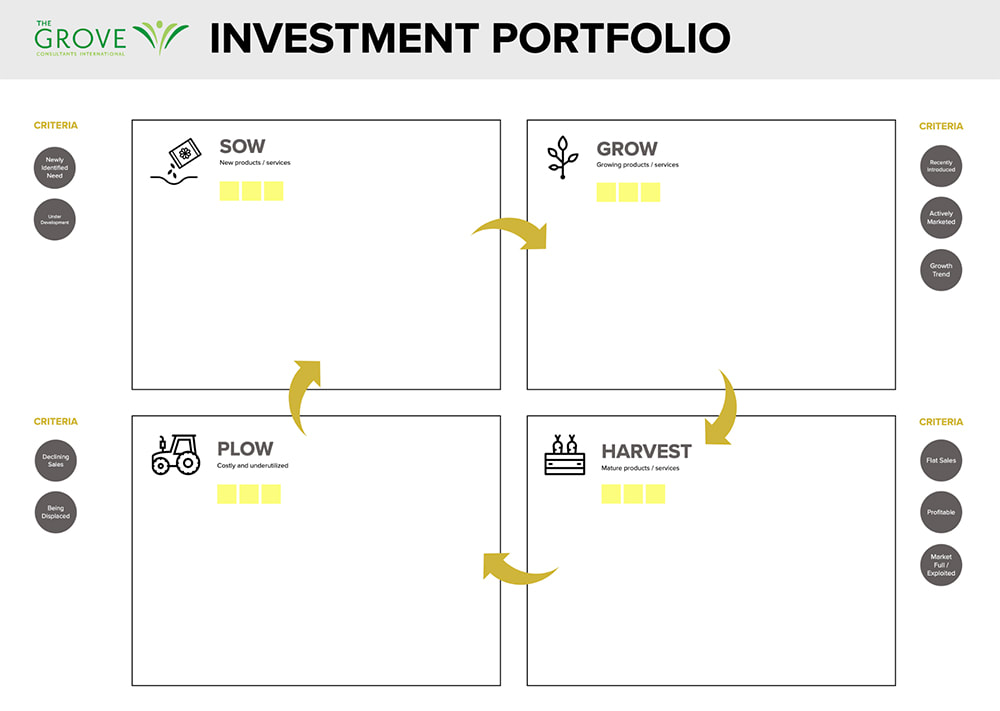
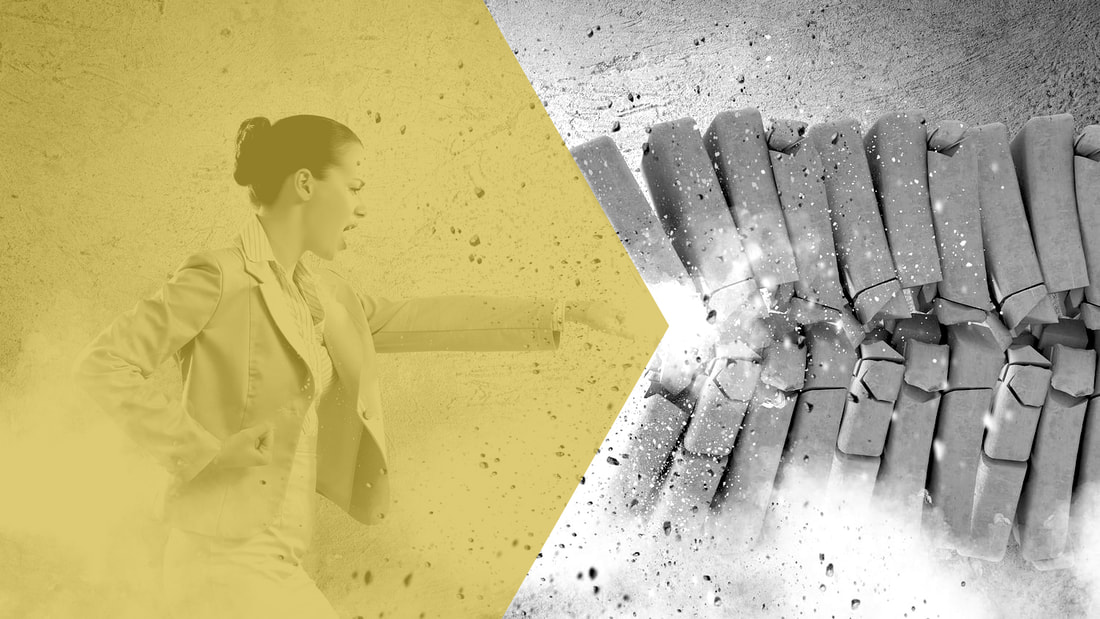
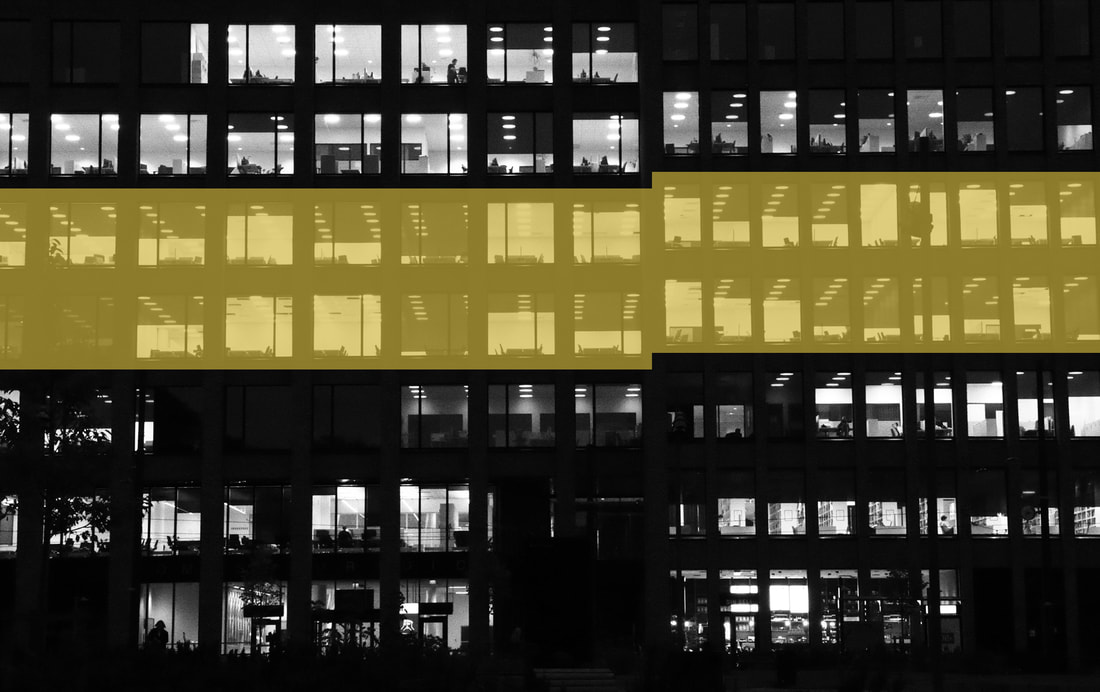
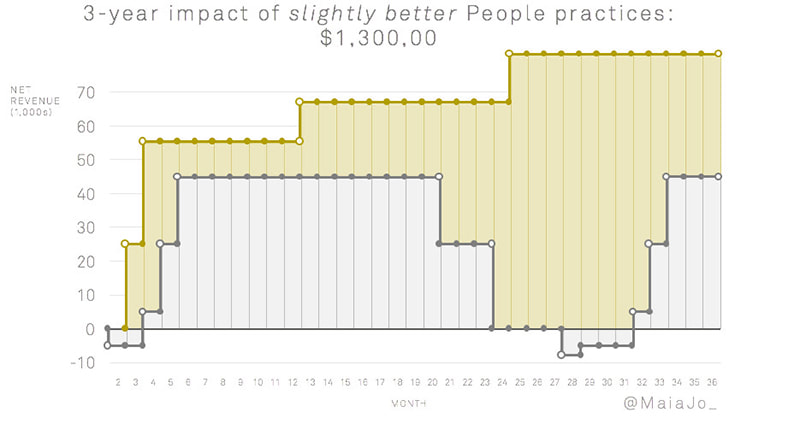

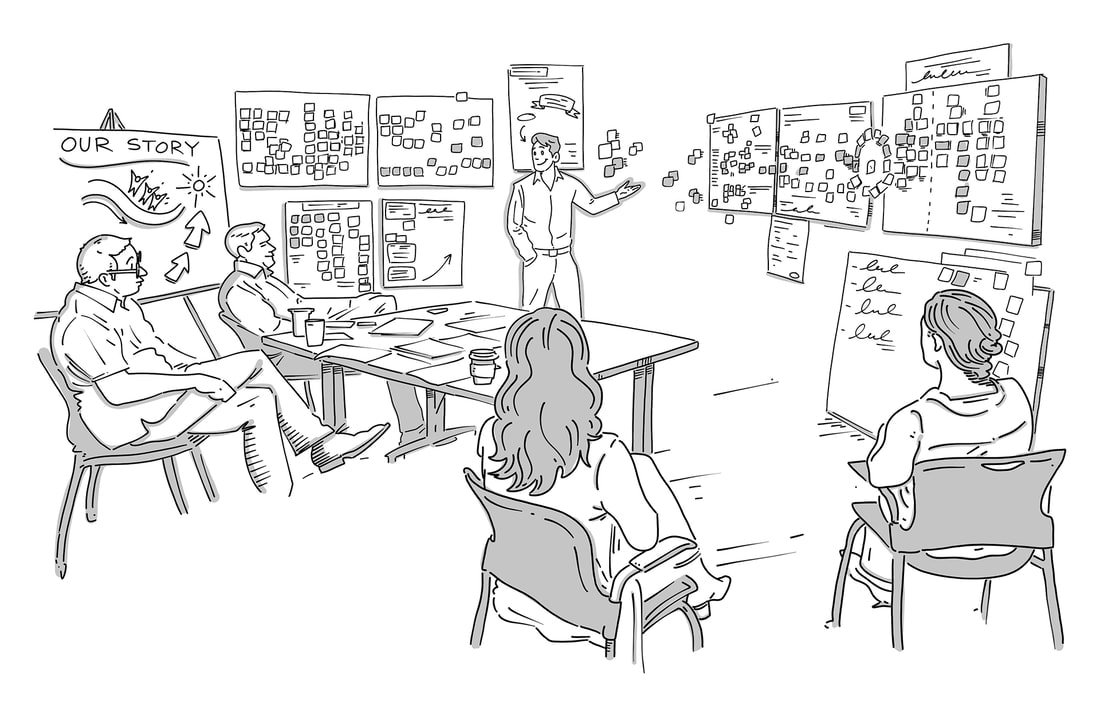
 RSS Feed
RSS Feed